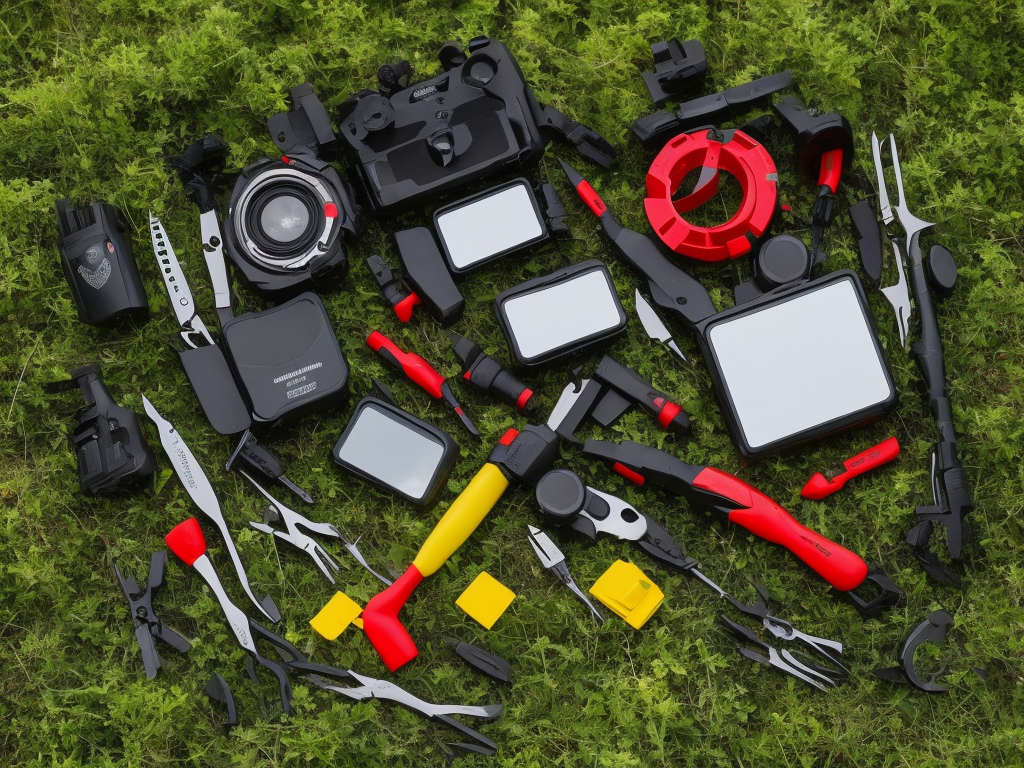Trail cameras are essential tools for outdoor enthusiasts who want to capture images of wildlife in their natural habitats. These cameras are designed to capture high-quality images and videos with minimal human intervention, making them perfect for observing and studying wildlife.
However, even the most advanced trail cameras can encounter issues that prevent them from taking pictures. These issues can range from simple problems like dead batteries to more complex issues like damaged SD cards and incorrect settings.
In this article, we will explore eight common issues that can cause a trail camera to stop taking pictures and provide easy fixes to help you get back to capturing those amazing wildlife shots.
To start, it’s important to understand that trail cameras are complex devices that require regular maintenance to function properly. Neglecting your camera or failing to follow the manufacturer’s instructions can lead to a range of issues that prevent it from taking pictures.
Some of the most common issues include dead batteries, water damage, and incorrect settings. Dead batteries are a common problem that can be easily fixed by replacing them with fresh ones. Water damage can occur if the camera is not properly sealed or protected from the elements. Incorrect settings can also cause issues, such as the camera not taking pictures at the right time or in the right location.
By understanding these common issues and taking preventative measures to maintain your camera, you can avoid many of the problems that prevent it from taking pictures.
Possible output for the given input:
One of the main reasons for trail cameras not taking pictures, as discussed in the pre-existing knowledge, is related to issues with the SD card. These issues may include damage to the SD card or incorrect formatting, which can prevent the camera from recording any pictures or videos.
In order to fix this issue, it is recommended to reformat the SD card or replace it altogether. Before reformatting, it is important to back up any important files on the SD card as reformatting will erase all data.
Reformatting the SD card can be done using a computer or the camera itself. It is important to ensure that the SD card is compatible with the camera before replacing it. It is recommended to use a high-quality and high-capacity SD card that is specifically designed for use with trail cameras.
Additionally, it is important to ensure that the SD card is not locked, as this can prevent the camera from recording any pictures or videos. By following these steps, issues related to the SD card can be easily resolved, allowing the camera to take pictures and record videos as intended.
Common Issues
Common issues that may cause a lack of picture taking by a trail camera include damaged SD cards, dead batteries, incorrect settings or placement, and corrosion.
A damaged SD card may prevent the camera from saving pictures properly. In such cases, reformatting the SD card may be necessary. It is also possible that the SD card is locked, which could prevent the recording of pictures. To fix this, the lock should be disabled by sliding it to the unlock position.
Dead batteries are another common issue that can be easily fixed. Using fresh batteries can solve the problem. It is important to note that the trail camera’s battery life may vary depending on the camera’s features, such as the number of pictures taken and the length of videos recorded.
Proper placement and range are also crucial in ensuring that the camera takes pictures as expected. The camera should be positioned in an area where the target animal is likely to pass by and the range should be set appropriately.
Corrosion is yet another issue that can prevent good contact with batteries, therefore, checking for corrosion around the battery compartment is essential.
Prevention and Maintenance
To ensure the proper functioning of a trail camera, implementing preventative measures and regular maintenance is crucial, as it can save time and money in the long run. One important aspect of maintenance is ensuring that the camera is clean and free of debris. Dust and dirt can accumulate and interfere with the camera’s lens, resulting in blurry or distorted images. Regular cleaning with a soft cloth or brush can prevent this issue from occurring.
Another important preventative measure is to protect the camera from the elements. Exposure to rain, snow, and extreme temperatures can damage the camera’s internal components and lead to malfunction. To prevent this, using a weather-resistant housing or cover can protect the camera from the elements. Additionally, regularly checking the batteries and SD card can prevent issues from arising while in the field. The table below outlines some additional preventative measures and maintenance tips that can help ensure the proper functioning of a trail camera.
| Preventative Measure/Maintenance Tip | Description |
|---|---|
| Check battery life before use | Make sure the batteries have enough charge to last the duration of use |
| Use a surge protector | Protect the camera from power surges |
| Check for firmware updates | Keeping the camera up to date can improve performance and prevent issues |
| Use a lock box | Protect the camera from theft |
| Regularly format the SD card | Prevents corruption and improves camera performance |
| Check for damage/corrosion | Inspect the camera for damage and corrosion before use |
By following these preventative measures and maintenance tips, trail camera users can ensure that their equipment is functioning properly and producing high-quality images. Regular maintenance can also prolong the life of the camera and save money in the long run by preventing the need for costly repairs or replacements.

